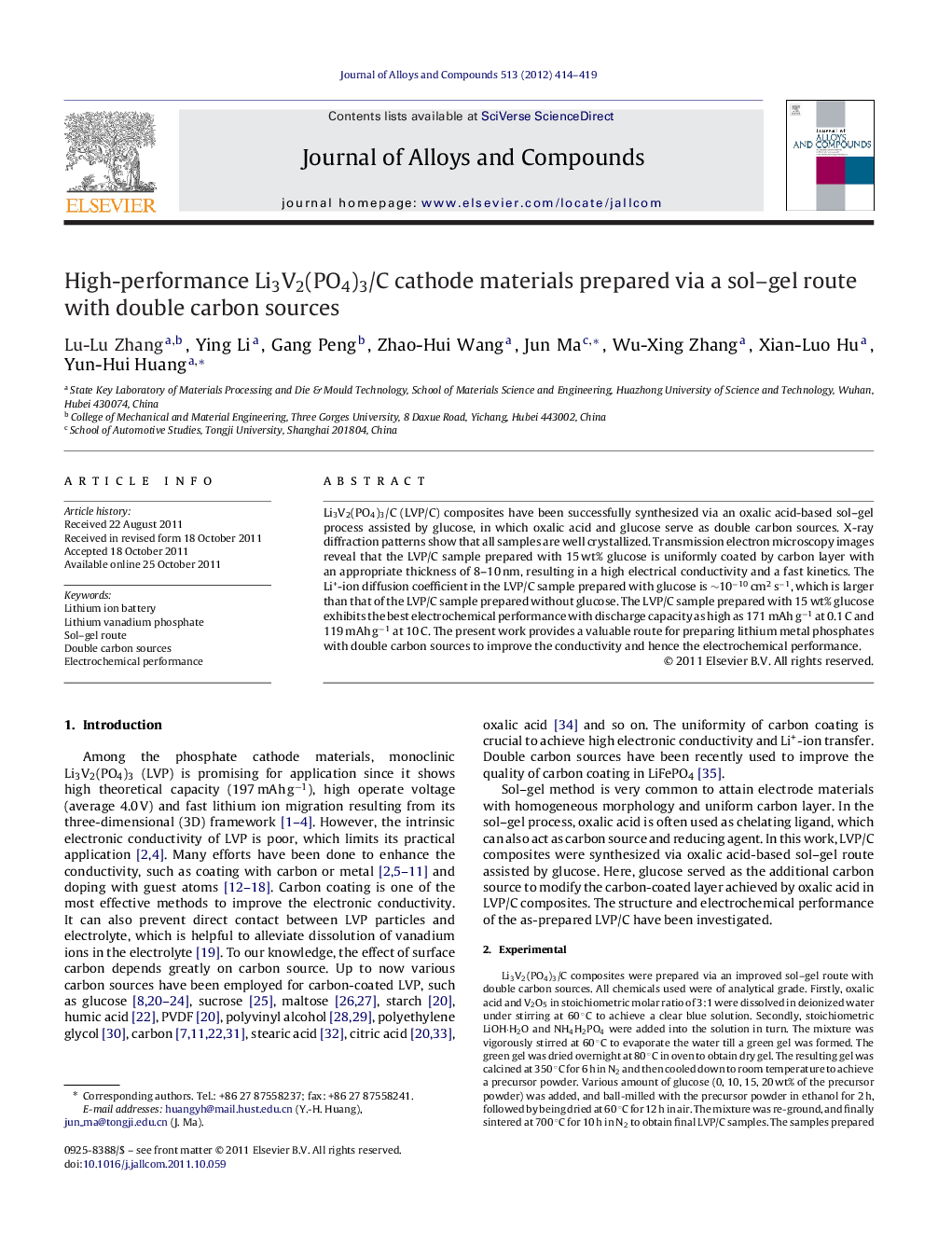| Article ID | Journal | Published Year | Pages | File Type |
|---|---|---|---|---|
| 1616492 | Journal of Alloys and Compounds | 2012 | 6 Pages |
Li3V2(PO4)3/C (LVP/C) composites have been successfully synthesized via an oxalic acid-based sol–gel process assisted by glucose, in which oxalic acid and glucose serve as double carbon sources. X-ray diffraction patterns show that all samples are well crystallized. Transmission electron microscopy images reveal that the LVP/C sample prepared with 15 wt% glucose is uniformly coated by carbon layer with an appropriate thickness of 8–10 nm, resulting in a high electrical conductivity and a fast kinetics. The Li+-ion diffusion coefficient in the LVP/C sample prepared with glucose is ∼10−10 cm2 s−1, which is larger than that of the LVP/C sample prepared without glucose. The LVP/C sample prepared with 15 wt% glucose exhibits the best electrochemical performance with discharge capacity as high as 171 mAh g−1 at 0.1 C and 119 mAh g−1 at 10 C. The present work provides a valuable route for preparing lithium metal phosphates with double carbon sources to improve the conductivity and hence the electrochemical performance.
Graphical abstractDouble carbon sources were employed to prepare core–shell Li3V2(PO4)3/C composites, giving rise to uniform carbon coating and high conducting network. The as-obtained composites showed remarkably enhanced capacity and rate capability.Figure optionsDownload full-size imageDownload as PowerPoint slideHighlights► Double carbon sources were used to prepare core–shell Li3V2(PO4)3/C composites. ► An improved oxalic acid-based sol–gel method was developed. ► Uniform carbon coating and high conducting network were attained for Li3V2(PO4)3. ► Remarkably enhanced capacity and rate capability were obtained.
